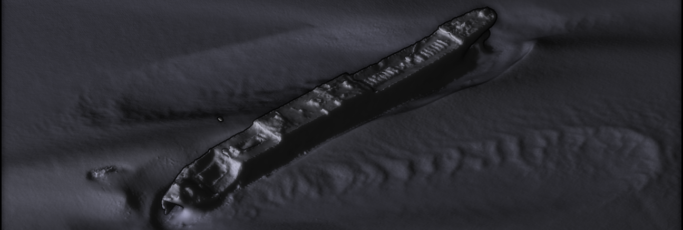
Basic info
Additional info
Short bio
Jan’s academic research has focused on submerged man-made legacy objects like shipwrecks and unexploded ordnance in the context of their stability on the seabed and processes driving their destruction/preservation. Currently employed as a Marine Geoscientist at Green Rebel (Ireland), processing hydrographic and geophysical data to support offshore wind energy developments in Europe.
Affiliation (1 )
Institution
Green Rebel Group
Department
Marine Division
Position
Geoscientist
Location
Cork, Ireland
Publications (3 )
Using difference modelling and computational fluid dynamics to investigate the evolution of complex , tidally influenced shipwreck sites

10.1016/j.oceaneng.2022.110625
The large number of historic metal-hulled shipwrecks on the seabed is a major consideration for the marine environment, heritage management and spatial planning. Their stability is driven by linked hydro- and sediment- dynamics, which in turn influence chemical corrosion and biological encrustation. The dynamism at underwater sites is frequently expressed in elaborate patterns of depositional and erosional features developed due to seabed scour. These settings are complex, due to the variable morphologies of the wrecks, and diverse types of seabed geology and geomorphology. Not only are the flow patterns and geomorphic changes at shipwreck sites not fully understood, but how these influence the wreck structures remains under-researched. Here we combine high-resolution multibeam echosounder, ocean current and sediment data with 3D Computational Fluid Dynamics (CFD) to investigate interrelations between hydro- and sediment-dynamics and the deterioration of two complex, fully submerged tidally-influenced shipwrecks. Intricate patterns of wake and horseshoe vortices are observed, and modelled wall shear stresses predict geomorphic changes recorded in 4-year and one-week interval difference models. Moreover, substantial damage is detected on the wrecks, correlated with areas of elevated wall shear stress and pressure in CFD simulations. The combined approach aids site management and provides analogies for offshore engineering.
Published with Rory Quinn, Thomas Smyth, Ruth Plets, Chris McGonigle, Kieran Westley, Fabio Sacchetti, Mark Coughlan on
Spatial and temporal variability in geomorphic change at tidally influenced shipwreck sites: The use of time-lapse multibeam data for the assessment of site formation processes

10.1002/gea.21840
Shipwrecks are an integral part of our maritime archaeological landscape and are associated with diverse societal and cultural interests, yielding significant management challenges. Coupled hydrodynamic and geomorphological processes significantly impact the effective in situ preservation of these fragile sites. In this study, we assess sediment budget change and hydrodynamic triggers at metal-hulled shipwrecks lost between 1875 and 1918, all located in the tidally dominated Irish Sea at depths between 26 and 84 m. This is conducted using time-lapse, multibeam echosounder surveys at multiannual, annual, and weekly time steps, supported by sediment grain-size analysis, modeled ocean currents, and shallow seismic data. Results indicate significant changes at all time steps for sites located in sand-dominated environments, whereas the seabed around shipwrecks settled in multimodal sediments shows virtually no change outside of measurement errors (±30 cm). Variability in geomorphic change is attributed to local environmental factors, including bed shear stress, sediment supply, and spatial barriers to scour. We demonstrate that individual wrecks in similar shelf sea regions can be in very different equilibrium states, which has critical implications for the in situ management of underwater cultural heritage.
Published with Rory Quinn, Ruth Plets, Mark Coughlan, Christopher McGonigle, Fabio Sacchetti, Kieran Westley on 2020-12-07
Residual relief modelling: digital elevation enhancement for shipwreck site characterisation

10.1007/s12520-020-01082-6
Scour processes play a critical role in the preservation status of submerged historic shipwrecks. Erosion of sediment leads to enhanced exposure of archaeological sites to physical, chemical and biological processes. Current methods for identifying erosional and depositional features at wreck sites are based primarily on visual interpretation of data, which is labour-intensive and entirely subjective. The increasing availability of high-resolution multibeam echosounder–derived digital elevation models (DEMs) of historic wreck sites allows for an entirely new level of detailed interrogation and analyses of the geomorphological features associated with these. In this study, we present a residual relief modelling method for the semi-automated extraction of such depositional and erosional features at wreck sites. Relief modelling is supplemented with a breakpoint classification approach, with final separation supported by DEM visualisation enhancement techniques. We applied the method to three World War I shipwreck sites and evaluated it against traditional manual vectorisation techniques. The results suggest that the semi-automated modelling method is robust, time-effective and capable of quantifying the products of scour processes with increased objectivity. Our method holds great potential for the objective characterisation of erosional and depositional patterns and processes at wreck sites, which have important implications for site formation studies and in situ preservation of underwater cultural heritage.
Published with Ruth Plets, Rory Quinn on 2020-06-02
Education (3 )
Institution
Ulster University
Degree type
doctorate
Field of study
environmental-sciences
Time
2018-11-22 - 2021-11-30
Institution
Uniwersytet Gdański
Degree type
master
Field of study
earth-marine-sciences
Time
2015-09-30 - 2017-06-30
Institution
Uniwersytet Gdański
Degree type
bachelor
Field of study
earth-marine-sciences
Time
2012-09-30 - 2015-06-30
Languages (3 )

English
C1

Italian - italiano
A2

Polish - polski
Native
Jan Majcher
@janmaj710
PhD, oceanographer and interdisciplinary scientist with an interest in geosciences, archaeology and seabed mapping.
Member since 2022-10-18 21:24:49
